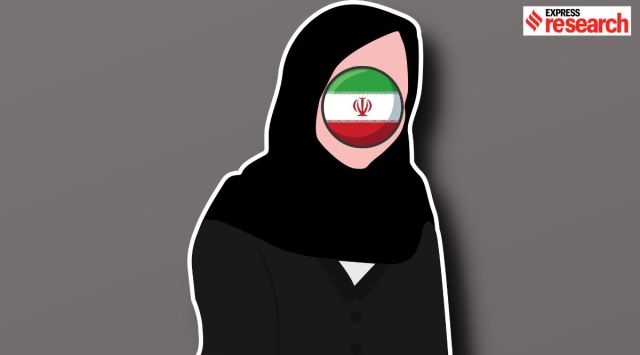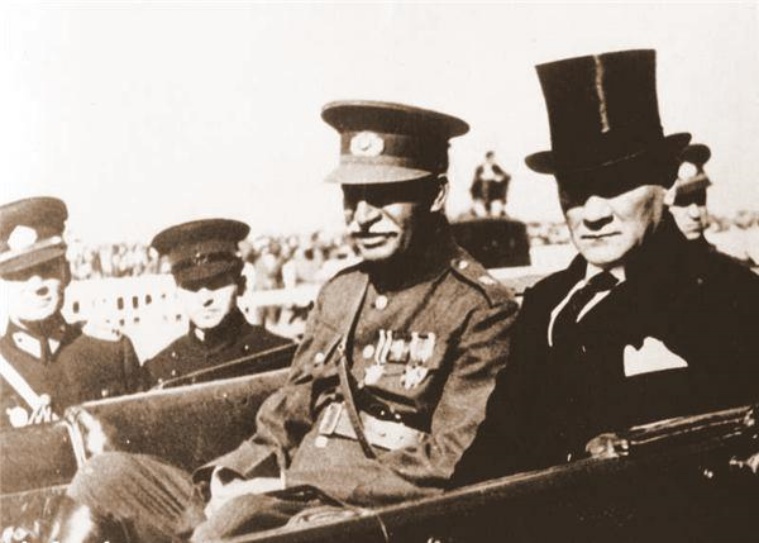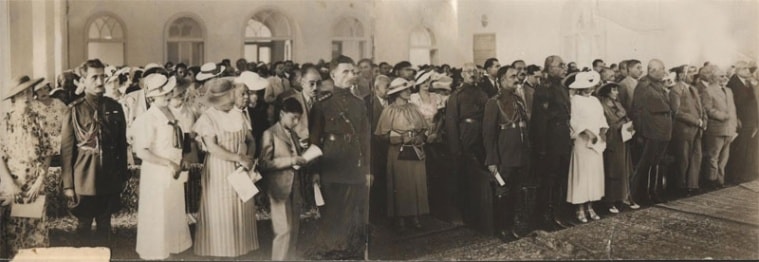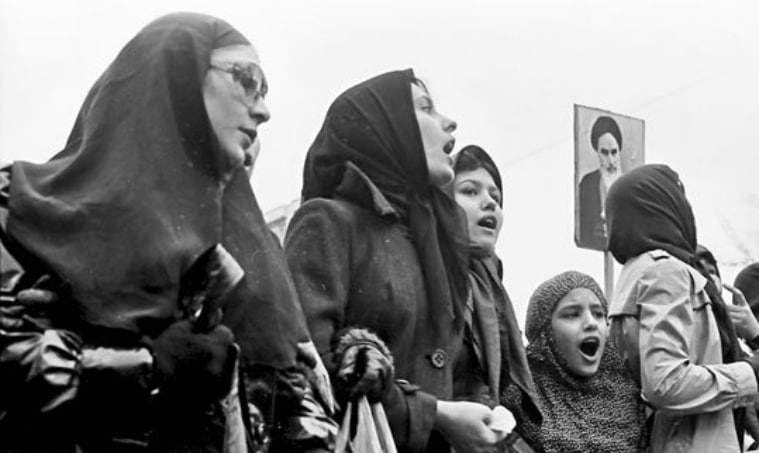Weeks after 22-year-old Mahsa Amini died in police custody for wearing the hijab too loosely, massive protests have continued to rage on the streets of all major Iranian cities. The chant ‘Women, life, liberty’ has been ringing everywhere as demonstrators take to the streets with some removing their veils or cutting their hair in an act of civil disobedience against the government’s strict policies towards women.
The images of the protests offer a striking resemblance to a similar uprising that took place on the streets of Iran in 1979 during the Islamic revolution. The Islamic veil played a central role then as well, with women wearing it to mark their protest against the ban on head covering by the first Shah of Iran, Reza Shah Pahlavi.

In her book, Rethinking Global Sisterhood, Nima Naghibi writes that both under the Shah and the Islamic Republic, Iranian women were seen as “a visible marker of the nation as either secular, modern, and Westernized, or alternatively, as Islamic, modern, and anti-imperialist.” The veil, therefore, acted as validation of a world view and system of governance, regulated by a series of men who saw their ability to control women’s bodies as an extension of their grip on power.
Mandatory ‘unveiling’ in Iran
Pahlavi is well known for his emphasis on building an Iran free of Islamic clerical influence on the one hand, and boasting of European-styled institutions and way of life on the other. His policies on clothing were to play a central role in this regard. He set out to standardise and Europeanise the appearances of both women and men with policies that had a deep impact on the everyday lives of the people of Iran.
Scholar of Iranian Studies, Houchang Chehabi, in his article, ‘Staging the Emperor’s new clothes: Dress codes and nation building under Reza Shah’ (1993) notes that the first dress code that was passed into law in 1928 after Pahlavi came to power stated that “all male Iranian subjects who are not required to wear special clothing in conformity with service in the government shall wear uniform clothing within the country.” The law which came into effect in March 1929 defined uniform clothing as a Pahlavi hat and a European suit. The only people exempted from the law were those part of the clergy or involved in religious teaching. The measure was met with some resistance, especially in the tribal areas where people were most comfortable in their traditional clothing.
 Reza Shah Pahlavi with president Mustafa Kemal Atatürk of Turkey (Wikimedia Commons)
Reza Shah Pahlavi with president Mustafa Kemal Atatürk of Turkey (Wikimedia Commons)
The same year, some reforms were made on the more critical issue of the veil. The police received orders to allow women in public without the veil. Though there was clerical opposition to the move, several women in Tehran welcomed the opportunity. The queen too made occasional appearances in public without the veil. In one such appearance, the queen visited the Fatima Masumeh Shrine during her pilgrimage in Qom wearing a veil that did not cover her face. For this, she was harshly criticised by a local cleric. In response, Pahlavi publicly beat the cleric the next day. But unveiling was yet to become a state policy.
In June 1934, after an official visit to Turkey, which was also undergoing a series of modernisation reforms under Mustafa Kemal Ataturk, Pahlavi set out to implement in Iran what he observed and learned there. “Reza Shah stayed longer than originally planned and was favourably impressed with the social and economic progress achieved under Ataturk and the participation of women in public affairs that this entailed,” writes Chehabi.
Story continues below this ad
Consequently, from the mid-1930s, he set out a number of dressing decrees, the first being that all ministers were expected to put on chapeaux (European felt hats). Later, in May 1935, a government-sponsored Ladies Centre was formed, with its main objective being to promote the abandoning of the veil. Consequently, ministers and their deputies were asked to appear once a week with their unveiled wives at functions, and teachers and students in girls’ schools were asked to prohibit the use of the veil. The policy of unveiling reached its peak in 1936 when a law made it an offence for women to appear in public wearing a chador or a scarf. Those who defied were arrested and their coverings forcefully removed.
 Military commanders of the Iranian armed forces, government officials and their wives commemorating the abolition of the chadors. (1936) (Wikimedia Commons)
Military commanders of the Iranian armed forces, government officials and their wives commemorating the abolition of the chadors. (1936) (Wikimedia Commons)
Contrary to the common belief that these measures were carried out by Pahlavi to modernise Iran, ther are some who believe that his policies mostly had personal motivations. In his book, Promises of Betrayal, Fazle Chowdhury explains that Pahlavi’s policy “had very little to do with rushing Iran to compete with more prosperous nations and more to do with releasing himself, and only himself, from the burdens of Shia clerical influence.”
The unveiling was accompanied by a spate of other measures designed to undermine the clergy, including making them pass state examinations and revoking their licenses to preach if they opposed government policy.
In perhaps the most pressing example of the monarchy’s apathy towards women, the last Shah of Iran gave an interview in 1973 in which he said women “may be equal in the eyes of the law, but not, I beg your pardon for saying so, in ability.” Later he added, “you’re schemers, you’re evil. Every one of you.”
Story continues below this ad
In this context, many women in Iran saw the unveiling not as a mechanism designed to promote their rights, but as a weapon deployed in the midst of a power struggle between the church and state. Their opposition to the policy was compounded by cultural norms and the severe way in which the decree was enforced. Further, as anthropologist Ziba Mir-Hosseini notes in a 2007 article, the unveiling policy “brought the confinement of many women and girls from religious and traditional families, since for girls to go to school or for women to leave the house without chador meant-for them the transgression of a religious mandate.”
In Women in Iran from 1800 to the Islamic Republic, anthropologist Lois Beck states that although the government denied using violence against non-complying women, it also did little to reprimand local authorities that did. Additionally, it compelled shopkeepers not to sell goods to veiled women, bus drivers not to permit them to ride, and government officials not to allow them to enter offices. Beck writes that “both men and women suffered, but the brunt of the policy was borne by women who for the first time were made to appear unveiled, in the company of men, and often did not know how to behave or what to wear.”
As upper-class women embraced the policy, women from lower socio-economic backgrounds preferred to cover their heads. As a result, Beck writes, the veil became a sign of class distinctions and conflicting loyalties. Adding to that sentiment, anthropologist Fadwa El Guindi, in her book Veil: Modesty, Privacy and Resistance, states that the veil became a “symbol of opposition to the Pahlavi regime” with women donning the hijab in protest against the monarchy.
The post-revolution mandate on the veil
During the demonstrations that eventually toppled the Shah, thousands of women took to the streets in hijabs, the covering serving both as a message and as a form of protection against identification. Images of these women, clad head to toe in black, marching across the streets of Tehran would become an important emblem for the new regime.
Story continues below this ad
After Pahlavi abdicated in 1941, unveiling ceased to be a law, although its ideology remained intact throughout the Pahlavi era. While it was no longer an offence, sporting a veil would still amount to facing hindrances in climbing up the social ladder. Eventually, the hijab took on a whole new meaning in Iran. As Mir-Hosseini writes, “by the late 1970s, for many women hijab represented what the Pahlavis had rejected; from a symbol of oppression and a badge of backwardness it was transformed into a marker of protest and of a new Islamic identity.”
As Iran’s first Supreme leader, Ayatollah Khomeini said in an interview with journalist Oriana Fallaci in 1979, “the women who contributed to the revolution were, and are, women with the Islamic dress, not elegant women all made up like you, who go around all uncovered, dragging behind them a tail of men.”
The new meaning attached to the hijab was achieved primarily through the works of two pre-revolutionary ideologues: Ayatollah Morteza Motahhari and Dr Ali Shariati. Motahhari in his writings overturned the symbolism of hijab from one of confinement to that of protection. He explained that the true purpose of the veil was not to exclude women from society but to facilitate their participation by safeguarding them from being treated as sexual objects. Shariati made clear that he did not believe in the religious arguments surrounding the hijab. Rather, he turned it from a symbol of tradition to one of revolution. “With this hijab, this generation wants to say to the Western colonialism and European culture: ‘for fifty years you tried, you schemed to turn me into a pseudo-western; but with this dress I am saying ‘No’ to you,” he wrote as quoted by Mir-Hosseini.
During the Islamic revolution of 1979, the veil came to represent the authentic nature of the revolution and its Islamic identity. Middle East expert Sanam Vakil in her 2011 book describes how “a multitude of women clutching their chadors as weapons of defiance, were overwhelming in number and support of the revolution”.
Story continues below this ad
 Women protesting in the Islamic revolution of 1979 (Wikimedia Commons)
Women protesting in the Islamic revolution of 1979 (Wikimedia Commons)
“Many were to become the vanguard women of the Islamic Republic,” she adds.
Among those who donned the veil in support of the revolution were also women who believed in secular principles and freedom of choice for women. Little did they expect that soon after coming to power, Khomeini’s regime would make veiling mandatory for all women.
Khomeini’s first edict required veiling in the workplace. Several women responded by organising a march on International Women’s Day on March 8, 1979. Thousands took to the streets opposing the veil with the slogan, “freedom of choice in clothes.”
It did little to alter the government’s stance which came down with a mandatory veiling edict in 1981. By 1983, the Iranian Parliament passed the Islamic Punishment Law, whereby the lax observance of the veil would render a punishment of 74 lashes.
Story continues below this ad
Interestingly, the act of making the veil mandatory coincided with the Iran-Iraq war (1980-88). Professor of Islamic Studies Faegheh Shirazi in her book, ‘The veil unveiled: The Hijab in Modern Culture’ (2001), notes that one reason for this could have been to distract public attention from the horrors of the war to an internal matter that was more controllable. She also suggests that the semantics of the hijab took on a new dimension during this period, one that separated Iran from Iraq on an ideological level. In other words, the hijab had to represent Shia ideology and culture. “While up until 1980 the veil was exploited to distinguish the Muslim woman from the ‘western’ doll, during the war with Iraq the veil was used to distinguish the Shia from the Sunni Muslim,” writes Shirazi.
Thereafter, posters, billboards, and even stamps promoted the war by heralding the ‘ideal’ woman. The poster of a veiled woman was everywhere — from public walls, transport facilities, educational institutions, and much else. “Covered by the hijab, the Iranian woman represents the chaste pious daughter, sister, wife, and mother of the soldier,” notes Shirazi. She adds that these posters always had quotes from various Shia Imams including Khomeini, praising the virtues of the hijab.
Mir-Hosseini notes that despite the repressive nature of the state policy on the hijab, it was hardly debated until the 1990s. One of the reasons being that women themselves were divided on the matter. While some rejected the enforcement, others welcomed the move as it gave them an opportunity to be in the public domain which was until then dominated by men. “Women who could never have flourished in the elite and westernized contexts of pre-revolutionary Iranian society, now found in the hijab a particular sense of worth, a moral high ground,” she writes.
It is only from the 1990s, with a generational shift that a new attitude began to emerge, even among those who had, during the revolution, welcomed the hijab imposition. The hijab underwent yet another transformation, as it came to be associated with fanaticism and state ideology.
Story continues below this ad
Today the veil also represents the degree of absolute power and control that the Islamic Republic holds over its people. As a Brooking Institute report notes, “for young Iranian women, compulsory hijab is just one manifestation of a ruling system that seems to have criminalised every opportunity for self-expression.” In addition to governing what women wear, the state also prohibits dancing, singing, playing music and shaking hands with men.
According to an Iranian school teacher, the veil is one arm of the state’s control over its people. Speaking with indianexpress.com, she says, “In every way, the state is dominant. They tell us what to wear, what to teach and how to behave.” For her, observing the hijab is a choice, but it is important to stress the importance of having that freedom to choose.
“Without it, people cannot think, cannot form opinions. From a young age they are indoctrinated by the policies of the government and if they try to resist or show their individual selves, they are seen as a threat.”



 Reza Shah Pahlavi with president Mustafa Kemal Atatürk of Turkey (Wikimedia Commons)
Reza Shah Pahlavi with president Mustafa Kemal Atatürk of Turkey (Wikimedia Commons) Military commanders of the Iranian armed forces, government officials and their wives commemorating the abolition of the chadors. (1936) (Wikimedia Commons)
Military commanders of the Iranian armed forces, government officials and their wives commemorating the abolition of the chadors. (1936) (Wikimedia Commons) Women protesting in the Islamic revolution of 1979 (Wikimedia Commons)
Women protesting in the Islamic revolution of 1979 (Wikimedia Commons)





























